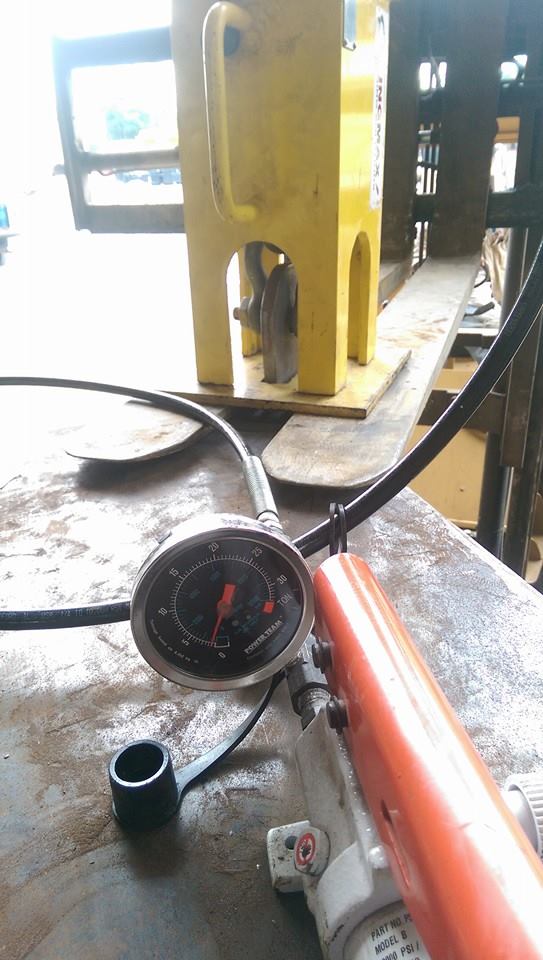The major oil companies operating in the Gulf of Mexico require that all cargo transit containers be load tested. Eagle Oilfield performs this task by simulating the actual load using our patented load testing equipment. Load tests can only be accepted by simulating the weight in the container while applying a pulling force to the pad eyes. This process is called full integrity load testing. The load applied to the equipment can range from usually 1.5 times or 3 times the safe workload limit. Eagle Oilfield has load test units that can load test equipment up to 30 tons. Our portable system can adjust to suit any size basket, box, or skid.
|
This load testing method provides a full load test of shipping containers, boxes, baskets and skid. Our equipment is designed to test more than just the pad eyes. By applying simulated load on the equipment, it not only tests the pad eye welds but also the overall design of the item being tested. The strength of the bottom, sides, and overall construction integrity and design of the cargo or shipping unit is being tested.
After load testing, we conduct a Visual Inspection (VT) and an inspection of all material welds that are in critical load path areas. A Magnetic Particle Inspection (MPI) or Liquid Penetrant Inspection (LPI) of all critical areas is also performed. We can also provide an Ultrasonic Inspection (UT) at customer request. When equipment becomes acceptable we provide a certificate of load test with NDT results, along with unique inspection tag affixed to unit. |
